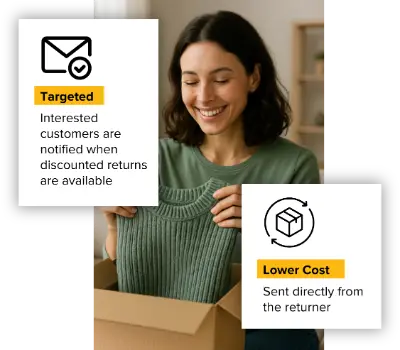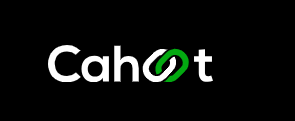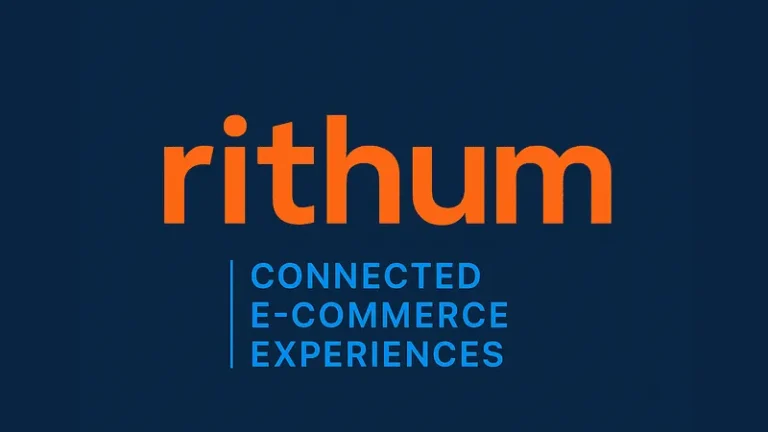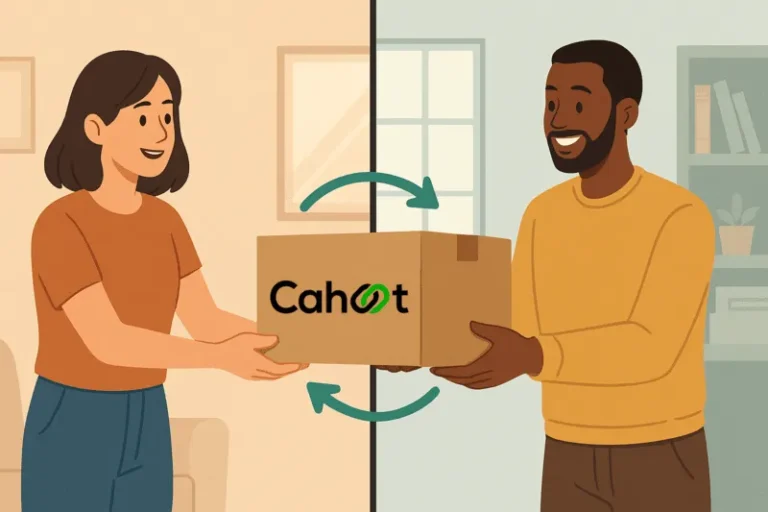Overcoming Amazon’s Inventory Limits: Order Fulfillment Alternative

Last updated on February 3, 2025
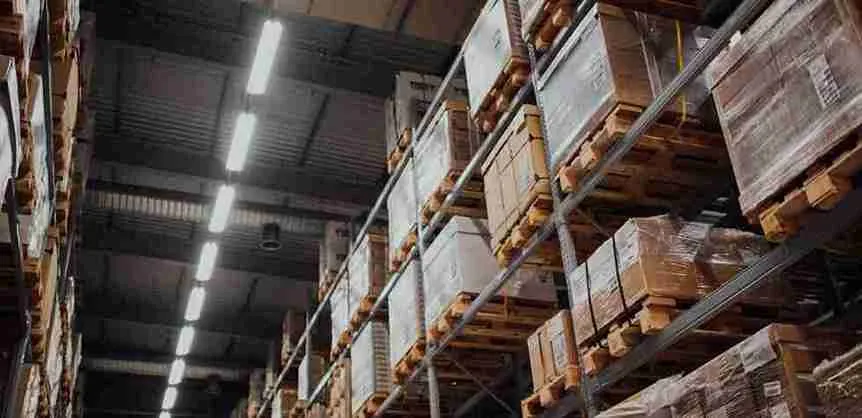
In this article
 22 minutes
22 minutes
Listen to podcast here.
Podcast Episode 185 – Avoiding FBA Limits with an Alternative Order Fulfillment Network with Cahoot
The Smartest Amazon Seller Podcast discussed the issue of warehouse inventory limits, which is becoming a major challenge for all Amazon sellers. Amazon’s warehouse inventory limits are getting lower as Q4 ramps up, leading to difficulty for sellers to send everything into FBA – Fulfilled By Amazon. The problem is exacerbated by Amazon’s challenge in hiring order fulfillment workers across its warehouses. The podcast host, Scott Needham, invited Manish from Cahoot to discuss an alternative solution. Cahoot is a company that has created a peer-to-peer network for order fulfillment, allowing sellers to use its warehouses to store their products and deliver them to customers. Cahoot was first trying to do a co-mingled Fulfilled By Merchant (FBM) solution, but has now pivoted to an order fulfillment services network. Its order fulfillment services are intended to create efficiency, reduce order shipping costs and transit time, and make it easy for sellers to operate in a highly profit-challenged environment. The podcast discussed how Cahoot’s order fulfillment service can help sellers overcome the problem of Amazon’s strict inventory limits.
Scott Needham:
Welcome to the Smartest Amazon Seller Podcast, your host, Scott Needham. I am an Amazon seller for 10 years, and in my 10th year, I’m actually literally about to wrap up, hit 10 years. Something has happened again, that’s become an issue for all Amazon sellers, that if you’re really paying attention, inventory limits are, they’re getting lower as Q4 ramps up, which is kind of, it’s the opposite of what we want. Usually you want your limits to go up when you, because right now you want to spend all your money to buy inventory to bulk up for the next eight weeks. I’m recording this right before November. So a lot of people are getting challenged. They can’t send everything into FBA, and if you don’t have an alternative solution, you’re kind of stuck. So I’ve got with me someone that has an alternative solution that I actually think is quite scalable. I’ve got Manish from Cahoot. Manish, welcome.
Manish:
Scott, thank you for having me.
Scott Needham:
So let’s just chat through this. If we’re talking big picture, how I see things, Amazon, because of COVID and 2021 and 2020, they increase their capacity considerably. Actually, I’m seeing reports that they increased it too much, but they also have a different problem. If you increase your capacity, they also have to have employees to do that, and they have hired hundreds of thousands of people, but they’ve also had huge turnover, lots of turnover. So much that they do have a business challenge in that they are exhausting the number of people that are available for employment across some of the warehouses that they serve in different markets. So that leads me to think, inventory limits, they’re going to be around. It’s going to be cyclical. Who knows? We’re fighting against market forces, bigger market forces. Are there a hundred thousand people that can work in this capacity in this market? And that’s either a yes or no, and if not, then they can’t receive everything. So that’s how I would set the stage. And why, again, a year after the worst of these inventory limits, we’re seeing this again. How do you see this?
Manish:
Well, that’s a great question, Scott. And you said it right. Half of Americans of the available workforce has either applied or worked at Amazon or has worked and quit at Amazon. So Amazon is running out of order fulfillment workers to hire, and that’s no secret. I mean, everybody knows that. So you have a bit of a dichotomy. On one hand, two quarters ago, Amazon came out and blamed their excess build, they actually added more warehouses in 2020 and 2021 than they had done in the previous 18 years of their operation. So they went all in, and then of course they came back and they said, “Oh, we made less money because we overbuilt. We have tons of excess capacity. We’re going to go rent out or sublease, hundred million or so square feet of space.”
And then you as a seller, and many others that I speak with regularly, are complaining that their stock limits are down. So it’s highly confusing for the seller because they’re getting news from both sides of their mouth, and that’s not… So the reality is, what we believe and suspect, that while the facilities might have been built, they are not online. So you could count them as overbuilding, but they’re not enough. They’re not online. They don’t have enough order fulfillment workers to make those facilities work. And that’s why the sellers are continually facing strict inventory limits at FBA. So it’s a real problem.
Slash Your Fulfillment Costs by Up to 30%
Cut shipping expenses by 30% and boost profit with Cahoot's AI-optimized fulfillment services and modern tech —no overheads and no humans required!
I'm Interested in Saving Time and MoneyScott Needham:
I’ve got two selling businesses that I check in on every day. One of them does have limits, and the other one actually has the opposite of the problem, has actually more space than we need. So it affects people at different sizes in different ways. And every business model is slightly different. And some people can transition to FBM on their own and some people can’t. Just like I do think one of the benefits of E-commerce is you can work out of your house and you don’t have to ever touch inventory if you are using, if you’re being creative, if you’re aware of either prep centers or 3PLs, whatever.
I’ve been aware of Cahoot for a while, and if I get anything wrong about your background, but you guys have slightly pivoted in that Cahoot was first trying to do a co-mingled FBM solution. Where if I was selling Head & Shoulders shampoo and I had it in my warehouse, in my backyard in Utah, but the customer was in New Jersey, if someone else had that same product, that same skew in New Jersey, they could satisfy the customer for about half the price. And now you created this peer-to-peer network for order fulfillment. And that’s a really creative and interesting solution, kind of a hard problem to solve because of all the different variables. But that’s how Cahoot started, right?
Manish:
Yes, we are… We’ve been fanatically focused on optimization. And the idea is how do you reduce the shipping costs, the transit time, and make it easy for sellers to operate in a highly profit challenged environment? So all our solutions are intended to create efficiency. And yes, you’re right about our history.
Scott Needham:
You had to create a lot of tech, tech that you actually still use, but you guys now lean in a little bit more to an order fulfillment services network. So basically an alternative to FBA. And if say someone wants to sell 10,000 units of Head & Shoulders shampoo, they get to utilize your network as opposed to FBA. And I actually think there’s a few cool things that we’re going to talk about with the Cahoot network that are kind of different, never heard of before. And I was like, “Okay, this is a worthwhile conversation and worth exploring.”
Manish:
Absolutely. I mean, sellers can, we believe in supporting the sellers wherever they sell. Cahoot takes a full service approach to fulfillment. So we support, if the merchants want to send some inventory to FBA, we also support the highest standard in fulfillment, which is Seller Fulfilled Prime (SFP). Which is very, very hard to find a solution for because of the extremely stringent metrics. So if you are listening, and if you’re a seller that has Seller Fulfilled Prime (SFP), you should hang onto it.
And if you wanted to do FBM and if you were affected by FBA restock limits or you are unhappy with the receiving delays, which we know there’s a long receiving delay at FBA, or other challenges. Like returns, so that’s a big problem because your return rate is 20% generally higher with FBA than FBM or if you’re selling on other marketplaces and channels, whether Shopify, your website, on Walmart, eBay, other places, because every seller ought to be selling on multiple channels. So you can come to Cahoot and Cahoot can provide an Amazon FBA like service, and it’s an alternative to FBA so that you can continue selling regardless of whether you can get your inventory into FBA or not.
Scott Needham:
I mean, Seller Fulfilled Prime (SFP), it’s tough. I’ve done it, seen it work out, seen us get kicked off a few times as you need to get stuff out the door fast. So right now people need space, they need alternatives to FBA. And you guys, very straightforward, kind of offer your network. And you could even make some comparison to an Uber model for shipping and FBM and so much that you actually have some sellers that join the network and make their warehouse available, whether it’s space-
Manish:
That’s right.
Scott Needham:
And fulfillment.
Manish:
Right. That’s right. I mean, what’s unique about Cahoot is it’s a peer-to-peer network. So essentially it’s a peer-to-peer collaboration platform. So on one side of our network, the demand side, which is ecommerce brands and retailers that are looking for affordable fulfillment services, akin to if you were looking to outsource your fulfillment, some are part of it. So we would support that and we would place our client’s inventory at one or more warehouses in the Cahoot network. And Cahoot provides a very, a technologically advanced solution. So we connect directly with the sales channels, we have deep integrations with every popular channel out there. And then we provide a very simple pricing to our clients so that they don’t have to deal with the complexities of, “Hey, what’s the SLA in California? And what’s the storage fees at California versus New York or versus Miami?” Or what have you.
Because sellers are looking for simplicity, they’re looking for predictability, and they’re looking for one throat to choke, so as to speak, when it comes to holding people accountable. And that’s what Cahoot provides. And that’s the only reason why Cahoot is able to achieve Amazon Seller Fulfilled Prime (SFP) metrics, which is frankly very difficult to achieve through traditional 3PLs. So that’s a demand side of our network. And on the supply side, these are warehouses that belong to other ecommerce brands and retailers that have excess capacity in their warehouse. So right now, if you are running your own warehouse and you’ve got five, 10, 20,000 square feet of excess space, it’s literally sitting idle. You’re not making any money. Your rent, your mortgage, your utilities are the same. So you have the opportunity for the very first time to join the order fulfillment services network and make some extra cash.
Scott Needham:
Yeah. I’ve definitely had a facility where we’ve had tens of thousands of square feet and I’m like, if you push us, yeah, we could actually set aside 10,000 and utilize the space better. And especially… Certain parts of the season, there’s always more ways to utilize space better. We’re not always great at that. But if there’s an economic incentive, like what you guys have, to be able to rent some of the space, basically take your rental costs down, that’s very interesting. And obviously there’s some areas of the country that are just more in demand, California and the northeast coast, because that’s where most ships are coming in. So that’s really interesting. And I like seeing what solutions work for some people. People ask me frequently, and sometimes there’s just always trade-offs. What would you describe, how expensive is it to fulfill Seller Fulfilled Prime (SFP) through your network? Because I think people still want the Prime badge, but they don’t want to, we can’t pay $30 for every single shipment.
Looking for a New 3PL? Start with this Free RFP Template
Cut weeks off your selection process. Avoid pitfalls. Get the only 3PL RFP checklist built for ecommerce brands, absolutely free.
Get My Free 3PL RFPManish:
No, nobody does, Scott. I think that is not a economically viable solution for vast majority of the sellers. So what Cahoot does is, you’re utilizing the economy ground shipping to ship the items and still meet that one-day, two-day delivery requirements of Seller Fulfilled Prime (SFP).
Scott Needham:
Is that because you guys are, because you’re distributing the inventory across the network?
Manish:
That’s right. In order to achieve two-day delivery target, Scott, you need at least four to five strategically placed warehouses. And in order to achieve one-day delivery target using economy ground like a UPS ground or FedEx ground, you need nine locations. And so what Cahoot does is places the inventory based on the demographic of your customers so that we can continue, one, meeting the SFP metrics that is needed in order to protect your account. And number two, do it affordably using the ground service. So you actually pay less than you would pay from your single warehouse.
Scott Needham:
Do you have sellers split up the shipment? Obviously that happens at the beginning, but do you ever do any transshipping yourselves or is that kind of like you’d rather replenish through having the seller replenish one at a time?
Manish:
I mean, both options are available on the Cahoot network. So essentially sellers can ship directly to the warehouses that they have been assigned based on the data. So we are very, very data driven. So that’s how we are able to minimize cost. Or in many cases, we would have a hub location that would act as your primary reservoir for inventory, and then we would trickle in the inventory across the nation as the demand warrants. So it’s the model behind the scenes is not fundamentally much different than how Amazon runs its own FBA network.
Scott Needham:
Yeah, that sounds exactly like that. You must have some pretty big warehouses.
Manish:
We have large and small because Cahoot was always designed to level the playing field. So if you had a warehouse that had 10,000 square feet, we don’t want to exclude that because there is power in numbers. There is a power in working with entrepreneurs, and some of them are absolutely top-notch. I mean, they do phenomenal job. And that’s probably the reason, or one of the very important reasons why Cahoot is able to offer the industry’s highest order fulfillment standards at a lower cost.
Scott Needham:
You know what? You make me feel like the world is just bigger. I just keep learning and just figuring out there’s this whole network going on and I haven’t even been… Keenly aware of it. I don’t know. It means there’s a ton of sellers that need this and then there’s a ton of warehouses that can meet Seller Fulfilled Prime (SFP). That’s not easy. And to make that, to get, like you said, nine different locations across the US and this was happen-
Manish:
It may look daunting to others, but it is business as usual at Cahoot. This is what we do, and we have been doing this for several years and we are the best in class when it comes to that level of accountability. Because I think there’s another big development that you may or may not be familiar with, Scott, is this Amazon Buy with Prime. So this concept of Seller Fulfilled Prime (SFP) is coming to every channel. And if your sellers are not aware, the audience is not aware, I’ve got a really awesome presentation on Buy with Prime and how that is going to affect the consumer expectation on every channel because this whole Seller Fulfilled Prime (SFP), or Prime-like delivery is going to be expected on every channel, on and off Amazon. And there’s a whole presentation, if people are interested, they can check it out on our resource library at www.cahoot.ai.
Scott Needham:
Interesting. So I mean, obviously some of your clients are multichannel, not just Amazon. Sure, there was a few different ways to go with that. What do you think someone that’s brand new, starting out, selling on anywhere, what would their experience be like? This is where I’m actually going to is you talked about accountability and that you, accountability to me means that you kind of need a web portal. You need to be able to see a view of your inventory and receiving and all things that are going on through hopefully what is on your website. Can you run me through that?
Manish:
Yeah, I mean, we have a best in class software. Everything is on the web. So the seller can pretty much access, if you’re familiar, akin to Amazon Seller Central, you know, will log in, you’ll see the movement of your orders. Orders are coming in from all the integrated channels, then your current inventory position at each of the locations where your inventory is currently situated. So you have realtime visibility into that and also realtime visibility into how orders are being picked, packed, and shipped. And additionally, you can also stay on top of the delivery to make sure that the orders are being delivered on time. In fact, we go one step further because we hold the carriers accountable as well. So if the carriers, they miss the SLA or if Cahoot misses the SLA, we like to expose that to our audience, to our sellers. Because for us, it’s a network, which is you are, we are in it together, and therefore it’s very important that we are making that information available so that all parties are holding each other accountable.
Scaling Made Easy: Calis Books’ Fulfillment Journey
Learn how Calis Books expanded nationwide, reduced errors, grew sales while cutting headcount, and saved BIG with Cahoot
See Scale JourneyScott Needham:
Love it. That’s awesome. And is there any part of this network? I feel like we’ve covered the very immediate need that a lot of people have. I do think that having an FBM alternative to FBA is good diversity, especially in Q4. What part of what you guys do, do you feel like we haven’t covered yet?
Manish:
Well, one, I think the whole net impact of this innovation is lower cost, higher quality. People think that if you need higher quality, you need to pay more. And Cahoot is turning that on its head that because of this peer-to-peer network, we’re able to lower cost than the traditional options that you may have available. Number two, it’s a myth that FBA is cheaper or cheapest for everything. That is a big myth that is not true. FBA fees have gone up 30% in the last two years, so you should look at your rates today, not two weeks from now, not two months from now. So you would be shocked that FBA is not cheap and certainly not for multichannel fulfillment. So if you’re using FBA to fulfill your website orders or Walmart orders, you should look at that again. And Cahoot is able to offer something very affordable. Besides that, we also have the best in class shipping software, which-
Scott Needham:
Well-
Manish:
So if you have a warehouse… sorry about that.
Scott Needham:
No, you win me over with pricing. Pricing matters. If people were to take a loan, yeah, the interest rate matters. Money is money. So 6% is a higher interest rate than 3%. But in similar, shipping is shipping. Where if you’re paying a dollar extra in one spot versus another, you can’t ignore that over time.
Manish:
And this is the benefit of the network, as you know, is it just keeps getting stronger by the day. And then our goal is to return the additional benefit back to our members, back to our, on both sides of the aisle. So we welcome anybody who is listening, who has a warehouse that is either thinking about utilizing their excess capacity, they should come check us out at www.cahoot.ai, fill out the contact us form, we’ll get in touch. And if you are a seller that is reliant exclusively on FBA, my strong advice to you would be that you should have an option, you should have a backup. It’s just like your computer hard drive. You always want a backup. You don’t want all your eggs in one basket. Even if it is the best basket in the world, you need, you must have a backup to protect your business.
Scott Needham:
In some situations, it’s not the best basket. But I mean, I do love FBA. They’ve kind of created something awesome, but it doesn’t work in every situation, especially the multichannel, like you were saying.
Manish:
And we recognize that, Scott, unlike our competition, that takes probably a hard line. I mean, we support FBA, we support the seller. For us, it’s about supporting the seller. So what’s best for the seller is how we like to empower them and how we like to support them.
Scott Needham:
Awesome. Well, Manish, tell me what is the most important tool that you use that helps you do your business? I mean, I will accept any answer other than Gmail.
Manish:
Well, Scott, we use a number of technologies and tools internally. I mean, the few things that comes to my mind is from a… We use Marketo as our email sales intelligence software. That is-
Scott Needham:
As I understand, Marketo is like, that’s enterprise grade. That’s a pretty robust tool.
Manish:
It is owned by Adobe now. It is a competitor to HubSpot. It is an enterprise grade technology that allows us to communicate with our-
Scott Needham:
I did not expect that. And you might be one of the first people I’ve ever met that’s actually used it. Why is it better than HubSpot?
Manish:
Well, I haven’t done the deep comparison with HubSpot. I think it just plays, I think Marketo existed prior to HubSpot. Certainly it has a very strong integration with salesforce.com, which is our CRM.
Scott Needham:
Okay.
Manish:
And we live in this new world where sales intelligence plays a huge role, that if I’m trying to contact you, what time would be ideal to contact you? Things like that can make or break, let’s say, depending on your routine, you may be a evening person versus somebody else may be a morning person. So if you send the wrong, even if you send the best message at the wrong time, it may not get noticed and things like that. So that’s one of the tools we use.
Scott Needham:
Awesome. Cool. All right. Well Manish, thank you so much. This is a really timely thing. If people want to learn more and maybe get pricing, figure out if this is a solution that works for them, it’s cahoot.ai, right?
Manish:
Yes. www.cahoot.ai. That’s C-A-H-O-O-T.ai. And just fill out the contact us form, and we’ll, a live human will be in touch very quickly.
Scott Needham:
Okay. Awesome. All right. Well thank you, Manish. This is very illuminating. Hopefully everyone, the quantity limits aren’t killing your business too much. They’re a little ugly at times. It’s cost us plenty of money in years past and fought some awkward situations. So figure it out, if you ever have any questions, you could reach out to Manish, you could reach out to me. It’s an interesting thing other than how to get your inventory limits higher? I don’t always know because Amazon’s not very consistent.
Manish:
And there are some tools that I’ve got a nice webinar on how to clean up your account on Amazon so that you make the most of your limits that you already have. So I encourage people to check out the resource library because many times there are many things you could do and you should be doing in order to make the most of the limits you have, rather than letting the limit be underutilized or wasted. So there are things that you could do and you should do.
Scott Needham:
Yep. Awesome. All right, well we’ll wrap up there. Manish, thank you for coming on so much.
Manish:
Scott, thank you for having me.
Scott Needham:
Okay. And to everyone else, have a good Q4. Stay listening. So happy. I’ve been doing this podcast for three years and we’re only getting… I enjoy it. It’s fun. It’s great. Okay, hopefully everyone have a great day. We’ll see you.
Turn Returns Into New Revenue
